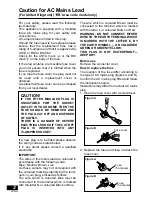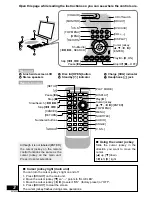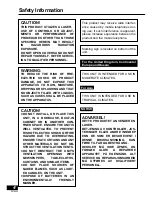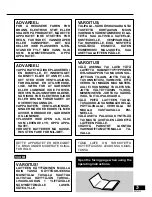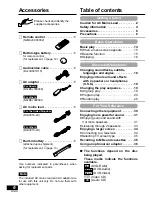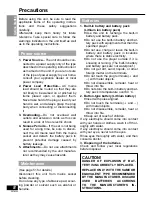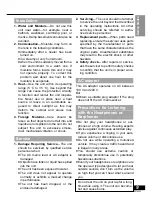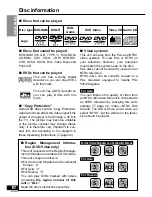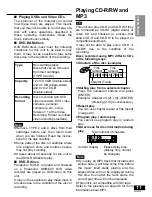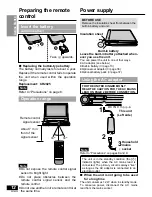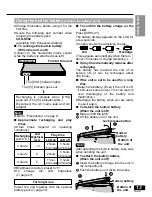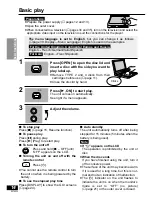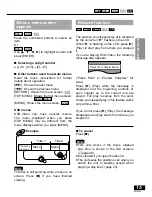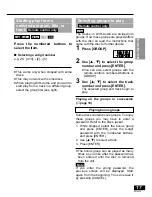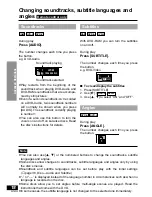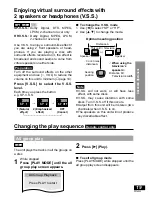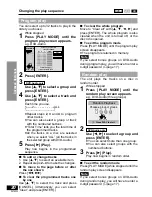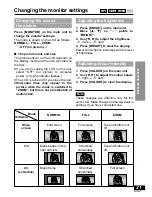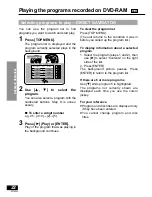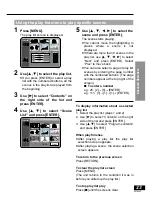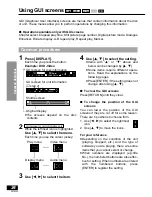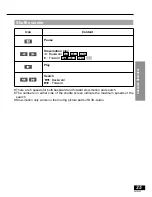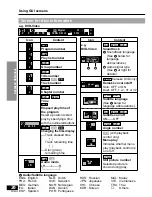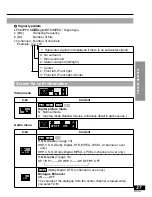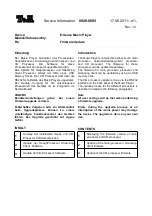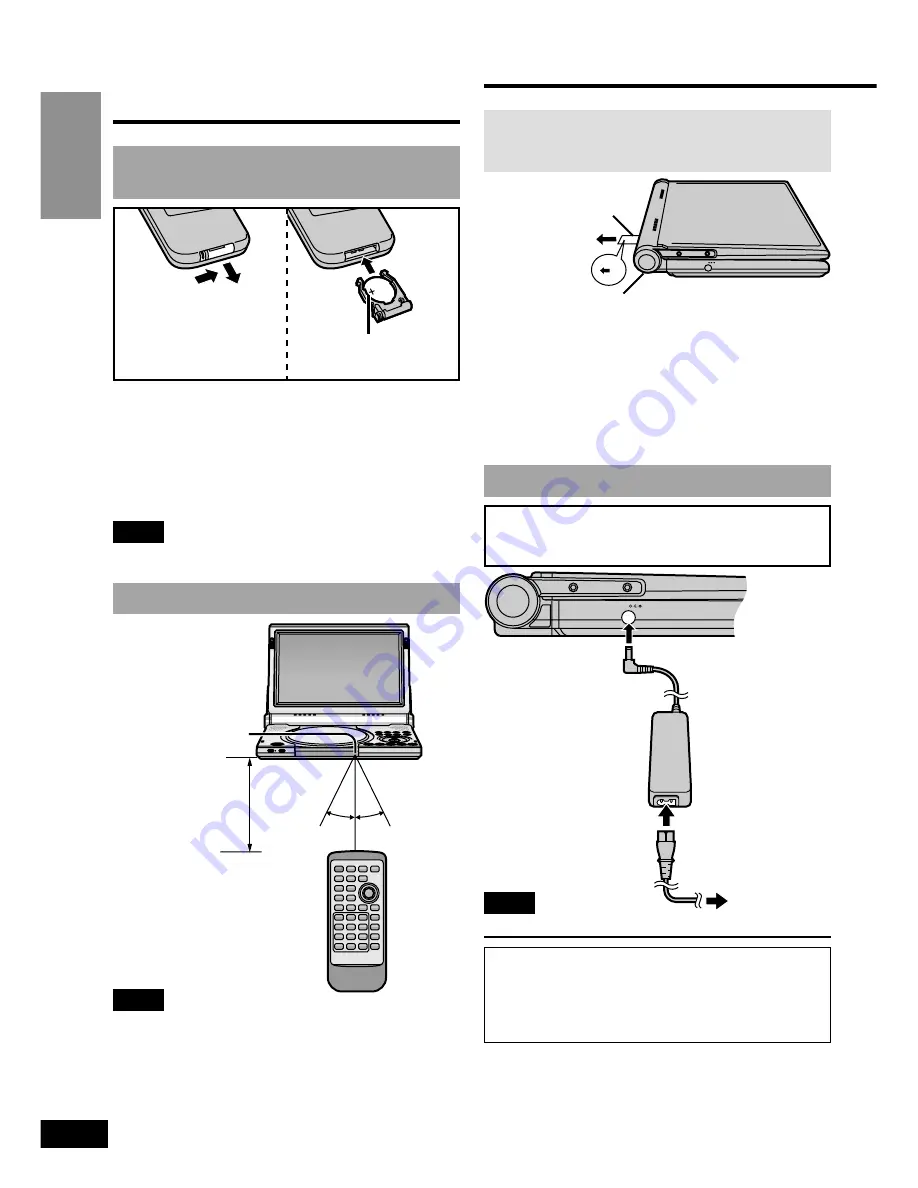
Getting Started
12
RQT6050
Preparing the remote
control
Insert the battery
(Lithium battery)
1
2
3
Face
+
upwards.
B U I L T - I N R E C H A R G E A B L E B A T T E R Y
OPEN
TOP MENU
V.S.S.
SEARCH
OFF
ON
ENTER
DVD/AUX
MENU
RETURN
DISPLAY
VOL
CHG
30
°
30
°
Remote control
signal sensor
Power supply
DC IN 9 V
%
This unit
(Left side)
DC IN 9V
1
2
3
Household
mains
socket
The unit is in the standby condition (the [
Í
]
indicator lights) when the AC mains lead is
connected. The primary circuit is always “live”
as long as the AC adaptor is connected to an
electrical outlet.
BEFORE USE
Remove the insulation sheet from between the
built-in battery and unit.
Leave the built-in battery attached when-
ever you use the unit.
You can power the unit in one of four ways.
≥
AC adaptor (see below)
≥
Built-in battery (
➡
page 13)
≥
Optional car adaptor (
➡
page 36)
≥
Optional battery pack (
➡
page 37)
Using the AC adaptor
∫
When the unit is not going to be used
for a long time
The unit consumes 1.2 W when in standby mode.
To conserve power, disconnect the AC mains
lead from the mains socket.
Note
Refer to “Precautions” on pages 8 and 9.
Note
≥
Do not expose the remote control signal
sensor to bright light.
≥
Do not place obstacles between the
remote control signal sensor and the
remote control.
≥
Do not use another unit’s remote control at
the same time.
∫
Replacing the button-type battery
The battery normally lasts for about a year.
Replace if the remote control fails to operate
the unit when used within the operation
range.
Replacement: CR2025
Note
Refer to “Precautions” on page 8.
Operation range
About 7 m in
front of the
signal sensor
DC IN 9V
P
U
L
L
Built-in battery
Insulation sheet
FOR THE UNITED KINGDOM ONLY
READ THE CAUTION FOR THE AC MAINS
LEAD ON PAGE 2 BEFORE CONNECTION.


